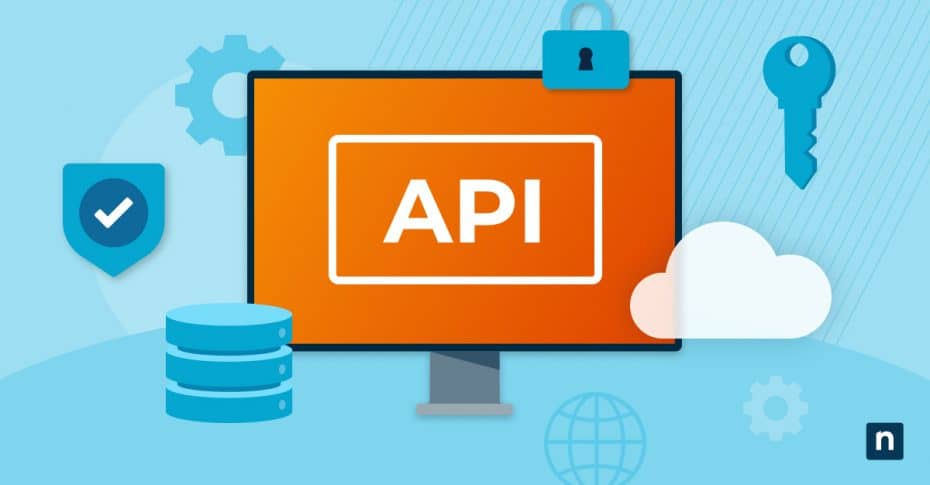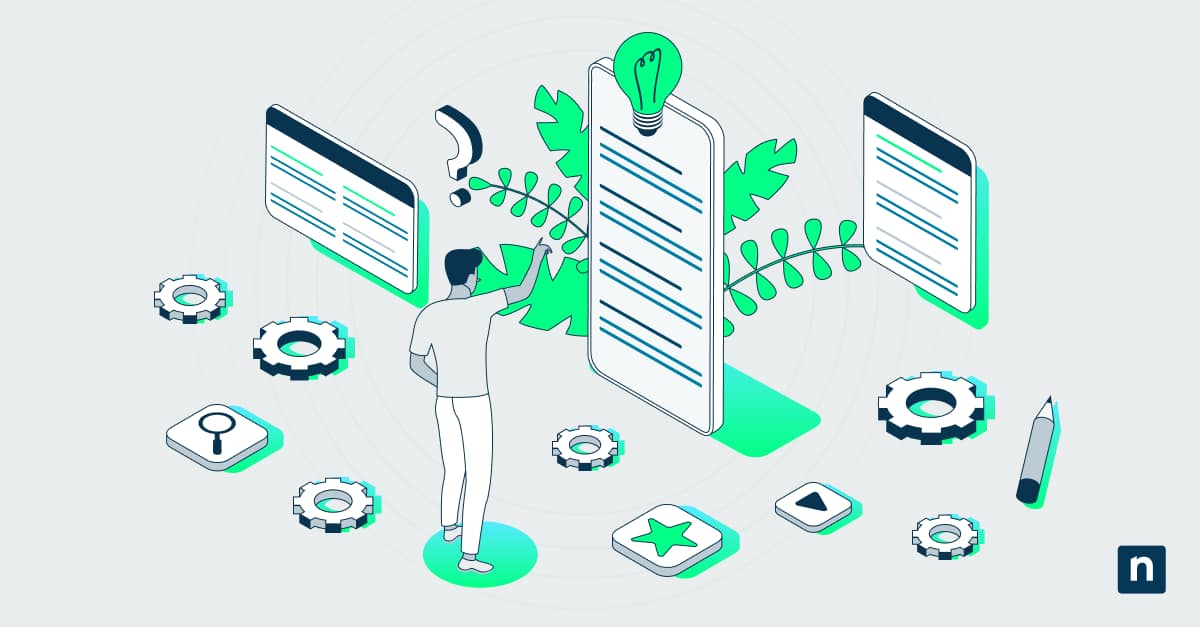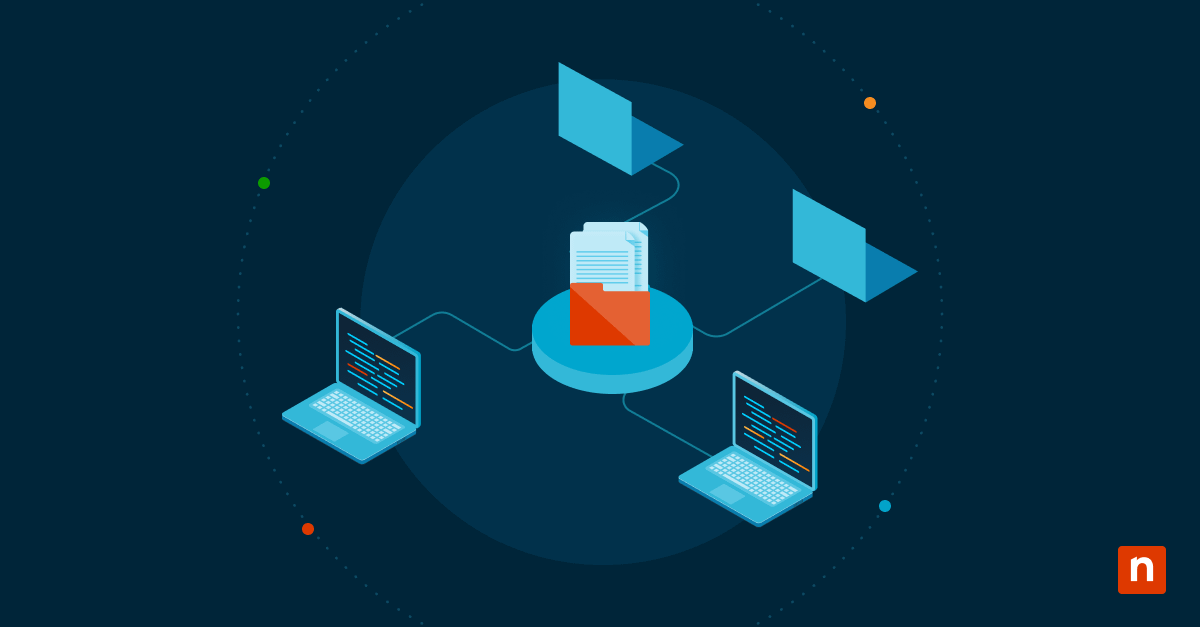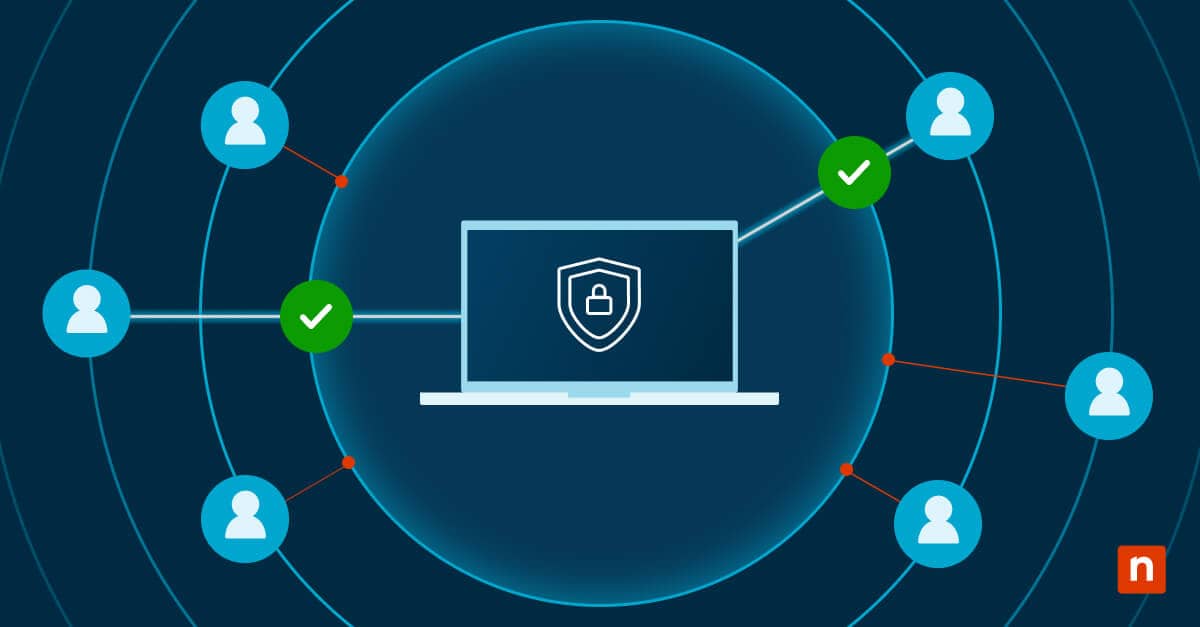Application Programming Interfaces (APIs) serve as the links between interconnected systems and services throughout the digital ecosystem, which enable data to flow, systems to communicate, and applications to connect. APIs play a vital role in modern software development, enabling the integration of services and facilitating the exchange of information. The ubiquity of APIs is a testament to their success in supporting a vast number of functions in modern software development.
However, their prominence has also made APIs a target for cyberattacks. In this article, we will provide an overview of API security best practices, examine common risks and vulnerabilities, outline strategies to fortify APIs, and run through eight best practices every organization should adopt to ensure robust API security.
Stop reacting—start leading. Learn how to shift to a proactive IT management strategy with our step-by-step guide. Get started.
What is API security?
API security amounts to a number of measures and practices designed to safeguard APIs from unauthorized access, data breaches, and cyber threats. It encompasses protecting the confidentiality, integrity, and availability of data transmitted and accessed through APIs. Managing API security is instrumental in preserving sensitive information, ensuring compliance with data privacy regulations, and upholding an organization’s reputation.
API security considerations extend to various types of APIs, including Representational State Transfer (REST) APIs and Simple Object Access Protocol (SOAP) APIs. Although both serve as intermediaries for communication between software components, they have distinct security considerations.
REST vs. SOAP API security
REST APIs are renowned for their simplicity and flexibility. They employ standard HTTP methods like GET, POST, PUT, and DELETE, simplifying implementation and utilization. REST API security often relies on familiar web technologies like OAuth for authentication and SSL/TLS for encryption.
SOAP APIs (Simple Object Access Protocol), in contrast, operate on a well-defined XML messaging protocol. They generally adhere to stricter security standards, including WS-Security, which endorses message integrity and confidentiality. SOAP APIs are prevalent in enterprise-level applications.
Common API security risks and vulnerabilities
APIs, like other digital assets, are susceptible to a number of security risks and vulnerabilities. It is important to understand the most common threats if we are to effectively mitigate them.
- Injection attacks: Injection attacks, such as SQL injection and XML injection, occur when attackers inject malicious code into API requests. This code can manipulate an API’s behavior and potentially grant access to sensitive data.
- Authentication challenges: Weak or insufficient authentication mechanisms can lead to unauthorized API access. Attackers may employ techniques like brute force attacks or session hijacking to circumvent authentication.
- Authorization lapses: Authorization vulnerabilities materialize when authenticated users gain access to resources or functionalities they should not have. Implementing robust role-based access control (RBAC) is crucial to mitigate this risk.
- Insecure Data transmission: APIs transmitting data without encryption are susceptible to eavesdropping. Implementing Transport Layer Security (TLS) ensures data confidentiality during transmission.
- Data exposure: APIs divulging more data than necessary are prone to inadvertent data exposure. Implementing data minimization and adhering to the principle of least privilege can mitigate this risk.
- Broken access controls: Inconsistent or absent access controls can empower unauthorized users to access sensitive data or execute unauthorized actions via the API.
- Denial of Service (DoS) attacks: DoS attacks can overwhelm an API’s resources, rendering it inaccessible to legitimate users. Implementing rate limiting and robust monitoring helps detect and mitigate DoS attacks.
- Inadequate logging and monitoring: Inadequate logging and monitoring can impede the detection and response to security incidents. Monitoring for unusual API activity and potential attacks is imperative.
Types of API cyberattacks
API security vulnerabilities present opportunities for cyberattacks, with several attack types specifically targeting APIs:
- Man-in-the-Middle (MitM) attacks: Attackers intercept and manipulate communication between two parties, potentially compromising communications, stealing data, or injecting malicious code.
- Brute force attacks: Attackers seek to deduce authentication credentials through repeated login attempts, exploiting weak passwords or authentication mechanisms.
- API scanning: Attackers scan for exposed APIs and probe them for vulnerabilities or misconfigurations.
- Data scraping: Malicious actors extract substantial data from APIs, potentially leading to data breaches or service disruption.
- Content spoofing: Attackers manipulate API responses to display deceptive or malicious content to users, often for phishing purposes.
- API abuse: Legitimate APIs are misused for malicious purposes, such as transmitting spam or launching attacks from a reputable source.
How to secure an API
Securing an API necessitates a multifaceted approach that incorporates a combination of strategies, technologies, and best practices. These are the elements to consider when securing an API:
- Implement authentication methods: Implement authentication mechanisms such as OAuth, API keys, or tokens. Ensure precise authorization controls to restrict users to authorized resources.
- Encrypt communications: Transmit data over HTTPS to encrypt data during transit, safeguarding it from eavesdropping and tampering.
- Input validation: Sanitize and validate user input to prevent injection attacks. Block the execution of data received from untrusted sources.
- Enforce rate limiting: Enforce rate limiting to deter misuse and protect against DoS attacks. Restrict the number of requests a client can make within a specified timeframe.
- Encrypt data: Employ encryption to protect sensitive data at rest and in transit. Utilize established encryption algorithms and ensure secure key management.
- Adopt API gateways: Adopt API gateways to centralize and streamline security controls. API gateways can handle authentication, authorization, rate limiting, and logging in a centralized manner.
- Implement monitoring and logging solutions: Implement comprehensive and centralized monitoring and logging solutions to detect and respond to security incidents promptly. Continuously monitor for unusual API activity and potential attacks.
- Regularly audit and test: Conduct systematic security audits and penetration testing to pinpoint weaknesses and vulnerabilities. Promptly address any issues identified.
8 best practices for securing APIs
Achieving robust API security demands a proactive approach that prioritizes security throughout the development lifecycle. Following these eight best practices will result in comprehensive API security:
1. Design with security in mind
The foundation of API security is laid during the design phase. Start by conducting a comprehensive risk assessment to identify security requirements and potential vulnerabilities. Consider the following:
- Threat modeling: Analyze your APIs to anticipate potential threats and vulnerabilities. Document these threats and develop strategies to mitigate them.
- Data classification: Categorize the data that your API handles based on its sensitivity. Implement access controls and encryption based on data classification.
- Attack surface reduction: Minimize the attack surface by exposing only the functionalities and data that are necessary. Avoid exposing sensitive data unnecessarily.
- Authentication and authorization: Define clear authentication and authorization mechanisms. Determine who can access your API and what actions they’re allowed to perform.
- Security by design: Integrate security into your API’s architecture from the outset. Leverage secure coding practices, such as input validation, to prevent common vulnerabilities like injection attacks.
By designing your API with security in mind, you establish a strong defensive posture from the beginning, significantly improving resilience to potential threats.
2. Audit and update regularly
The digital landscape is dynamic, and so are the threats to APIs. Conducting regular security audits and keeping your APIs up to date is essential to stay ahead of emerging risks:
- Security audits: Schedule periodic security audits, preferably conducted by experienced penetration testers. These audits help identify vulnerabilities and weaknesses in your API.
- Vulnerability assessment: Use automated vulnerability scanning tools to identify common security issues. Regularly review and address the findings.
- Patch management: Stay vigilant about security patches and updates. Apply patches promptly to fix known vulnerabilities.
- Version control: Maintain version control for your APIs. When introducing new features or updates, ensure vulnerabilities are not introduced.
Regular audits and updates enhance your API’s security and demonstrate your commitment to safeguarding user data and assets.
3. Implement robust authentication mechanisms
Authentication is the cornerstone of API security. Ensuring that the right individuals or systems access your API is crucial:
- OAuth 2.0: Consider using OAuth 2.0, a widely adopted authorization framework that provides robust authentication for both applications and users.
- API keys: Implement API keys for simpler client authentication. However, ensure they’re adequately protected, rotated, and not exposed in client-side code.
- Multi-Factor Authentication (MFA): Encourage or require MFA for API access, especially for applications that handle sensitive data.
- JWT (JSON Web Tokens): If applicable, use JWTs to securely transmit information between parties. Employ proper encryption to protect JWTs.
Robust authentication ensures that solely authorized entities can interact with your API, reducing the risk of unauthorized access.
4. Code to protect against common cyber attacks
APIs are attractive targets for cyberattacks, and a proactive defense is necessary. Develop your APIs to be resilient against common attacks like SQL injection, cross-site scripting (XSS), and cross-site request forgery (CSRF):
- Input validation: Implement thorough input validation to prevent injection attacks. Sanitize and validate data from untrusted sources.
- Output encoding: Encode output data to thwart XSS attacks. Escaping user-generated content ensures that it’s displayed as intended.
- Content Security Policy (CSP): Utilize CSP headers to control which sources of content are allowed to be executed and loaded by your web application.
- CSRF tokens: Include anti-CSRF tokens in your API requests to counteract CSRF attacks. These tokens validate the legitimacy of requests.
Developing your APIs for resilience against common attacks helps maintain data integrity and protects against malicious manipulation of API functionalities.
5. Implement rate limiting
Rate limiting is an essential mechanism to prevent abuse and misuse of your API. It controls the number of requests a client can make within a specified timeframe:
- Thresholds: Define reasonable request thresholds for different types of clients (e.g., free users, premium users, applications).
- Granularity: Implement per-endpoint rate limiting to ensure that a spike in requests to one endpoint doesn’t affect the entire API.
- Error handling: Return appropriate error responses when rate limits are exceeded, allowing clients to adjust their behavior.
Rate limiting not only preserves the availability and performance of your API but also mitigates the risk of DoS attacks.
6. Encrypt sensitive data
Data security is paramount, especially when sensitive information is transmitted or stored. Employ encryption to protect data:
- Data at rest: Encrypt sensitive data when it’s stored, whether in databases or on disk. Implement strong encryption algorithms and manage encryption keys securely.
- Data in transit: Transmit data over secure channels using protocols like HTTPS. Always use secure cipher suites and ensure proper certificate management.
Encryption guarantees that even if data is intercepted, it remains unreadable and confidential.
7. Use API gateways
API gateways act as intermediaries between clients and your API services. They offer centralized management and security enforcement:
- Authentication and authorization: Implement authentication and authorization logic within the API gateway. This centralizes security controls and simplifies management.
- Logging and monitoring: API gateways can capture detailed logs and metrics, aiding security incident detection and response.
- Traffic control: Control and manage network traffic destined for your APIs, enabling features like rate limiting and content caching.
- Security plugins: Many API gateways offer security plugins that can be customized to enforce security policies designed to optimize API security.
Leveraging API gateways can simplify and streamline security management, ensuring consistent security enforcement across all your APIs.
8. Align with established security standards
Adherence to recognized security standards and regulations is essential for maintaining industry-level protection:
- OWASP Top Ten: Familiarize yourself with the OWASP Top Ten, which identifies the most critical web application security risks, as well as describing appropriate actions to mitigate them.
- Industry regulations: Ensure compliance with any applicable industry-specific regulations, such as HIPAA for healthcare or GDPR for data privacy.
- Security frameworks: Implement security frameworks like NIST Cybersecurity Framework or ISO/IEC 27001 to ensure a robust security position.
Compliance with established frameworks provides a structured approach to security and demonstrates your commitment to safeguarding data.
The importance of API security
In an ever-evolving and distributed digital landscape, API security is fundamental to successful cyber security. Organizations must prioritize the security of their APIs to protect sensitive data, uphold customer trust, and safeguard their reputation. By understanding common risks, implementing robust security measures, and adhering to best practices, businesses can secure their APIs against emerging threats and ensure their continued success in the digital age.
API security is a complex discipline that demands vigilance, diligence, and a commitment to best practices. As businesses increasingly rely on APIs to drive innovation and connect with customers, investing in API security is essential to long-term success and resilience against cyber threats.
Take a look at the video tutorial on 8 Best Practices for Securing APIs.







